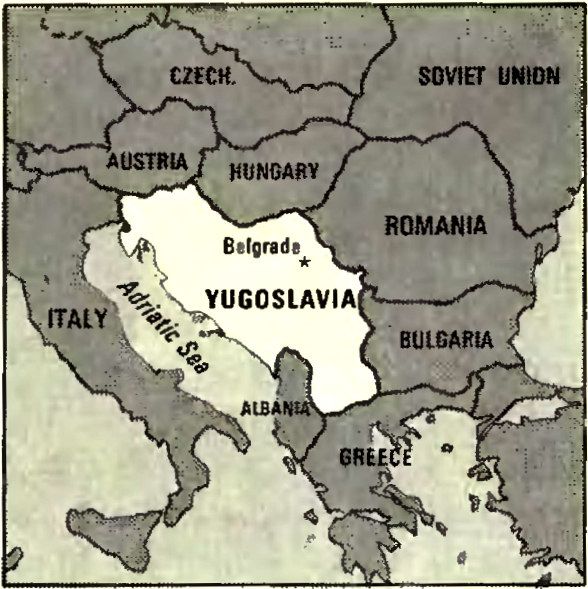MARCH 14, 2022 – Yugoslavia was my first encounter with a communist state; a nation led by “Big Brother,” Josip Broz Tito—though the man had been deceased for more than a year before I entered the country. Portraits of the strongman were still ubiquitous—a sign that while a power struggle was underway, no doubt, Tito served posthumously as the lid on a pot of boiling water.
Tito’s brutal genius lay in his ability to wrap Serbia, Croatia, Slovenia, Bosnia-Hercegovina, Montenegro, and Macedonia into a single national unit called, “Land of the Southern Slavs,” though as the world would learn in the bloody conflict a decade after my visit, not all the people roped into the deal were Slavs—or of the same religious faith. In reality, “Yugoslavia” was a temporary holding pen for some of the worst faith-related-ethnic violence in the history of the Balkans.
I remember the group of high-school-age girls, who, in their smart uniforms—blue skirts, white blouses, red handkerchiefs—and waiting on a Yugoslav station platform for a train to somewhere, broke into spontaneous song. I could hear “Yugoslavia” in the refrain, and a local bystander, who spoke some English, explained that we were witnessing Yugoslav patriotism—evidence of the lasting “Tito effect.”
Before assigning significance to Tito’s “dead-hand grip,” I should’ve read a book like Balkan Ghosts by Robert D. Kaplan, but that chilling dive into the bloody history of the region was a dozen years away from publication. The “Tito effect” would be blown to bits, but in 1981, I was oblivious to the coming storm. The happy song at the train station and Tito’s inescapable portrait provided a false sense of continuity and stability.
The “communist” aspect of Yugoslavia was in plain view, with its “Red Star” on prominent display, and government control-ownership in ways I’d not experienced outside of Tito’s unique “communist theme park” posing as a nation-state. The leading feature was people’s reticence—cloaking fear—about talking politics in public. Such self-censorship was shocking to a visiting Westerner with no prior firsthand exposure to a communist regime of that era. Yet, at the same time, I saw evidence of a market economy side-by-side with a centrally controlled economy—in the countryside, large, privately owned garden plots interspersed among state-owned farms; in Belgrade, private shops and vendors among state-run enterprises.
I saw far more consumer goods available in Belgrade than would be the case in the capitals of Soviet satellites or in the U.S.S.R. itself. Sharing my compartment aboard the train from Athens to Belgrade was a Yugoslav with a suitcase loaded with cheap, Western-brand sunglasses. He expressed no worries about confiscation—or his ability to liquidate them in Belgrade for a tidy profit.
In contrast with Soviet-controlled countries beyond Yugoslavia, the latter harbored no sign of Kremlin influence. Tito’s successful avoidance of Stalin and his successors was another mark of Tito’s political skill, if not his unforgiving repression. For 36 years, “Titoslavia” had followed the (red) star of its namesake.
(Remember to subscribe to this blog and receive notifications of new posts by email.)
© 2022 by Eric Nilsson
